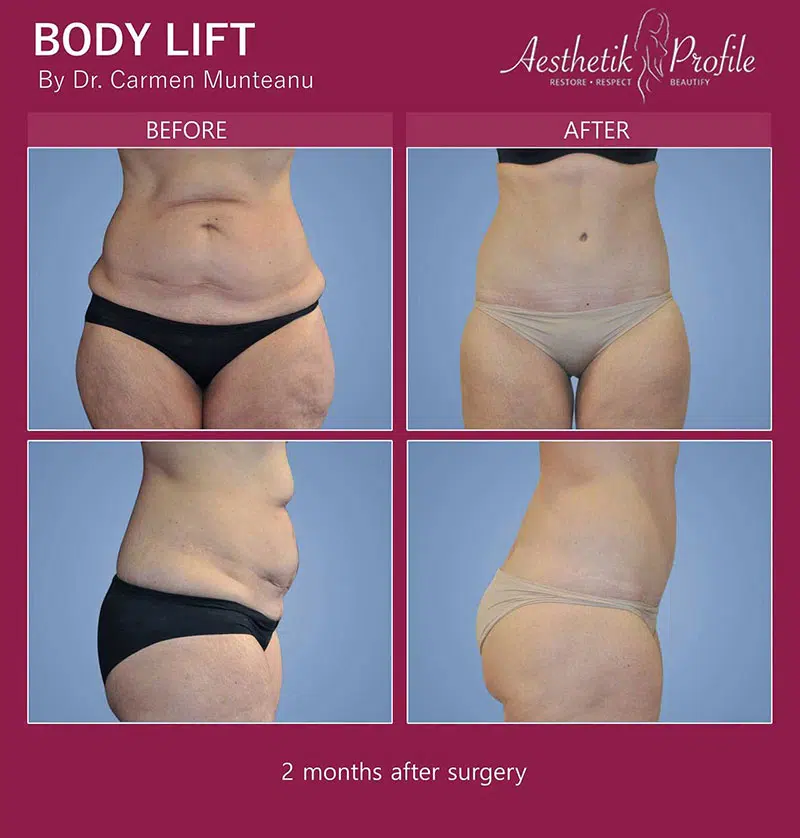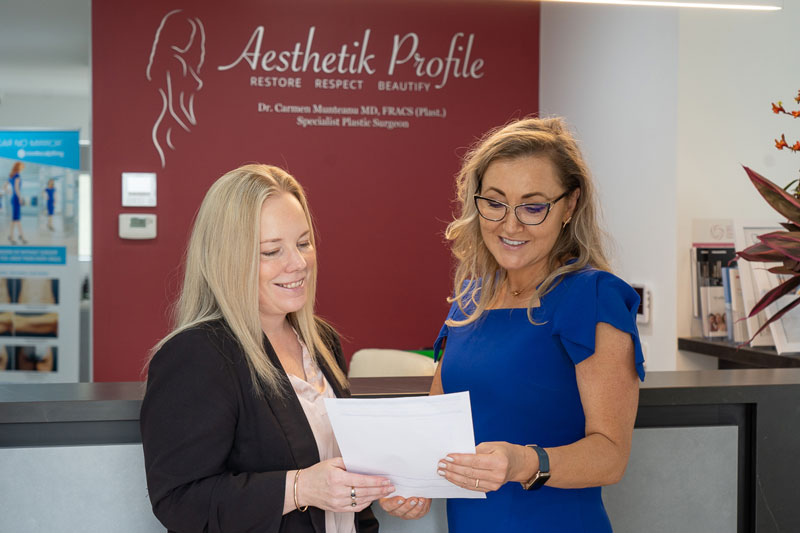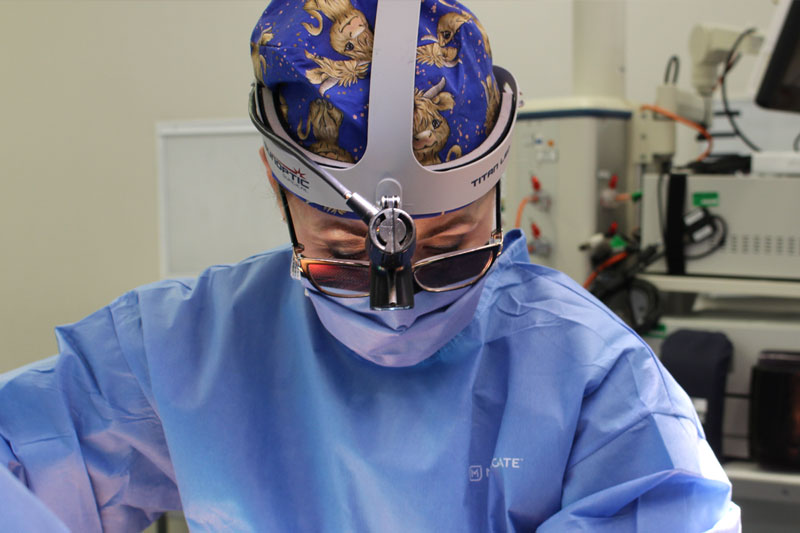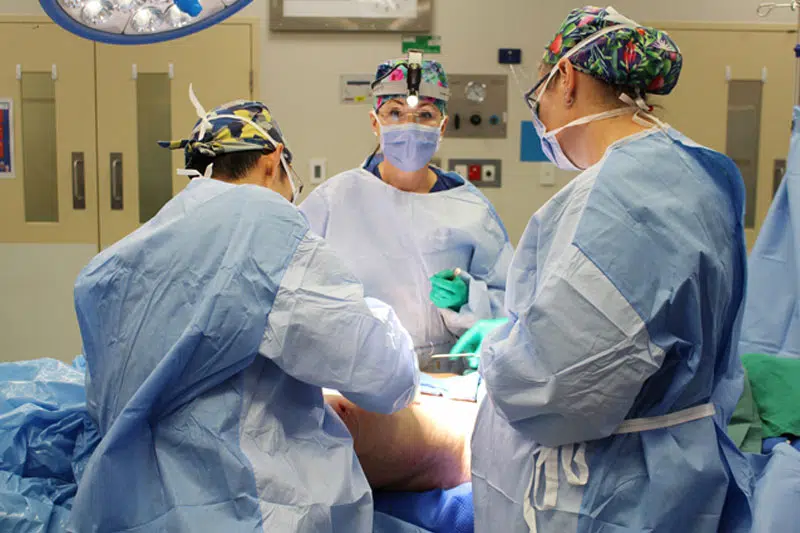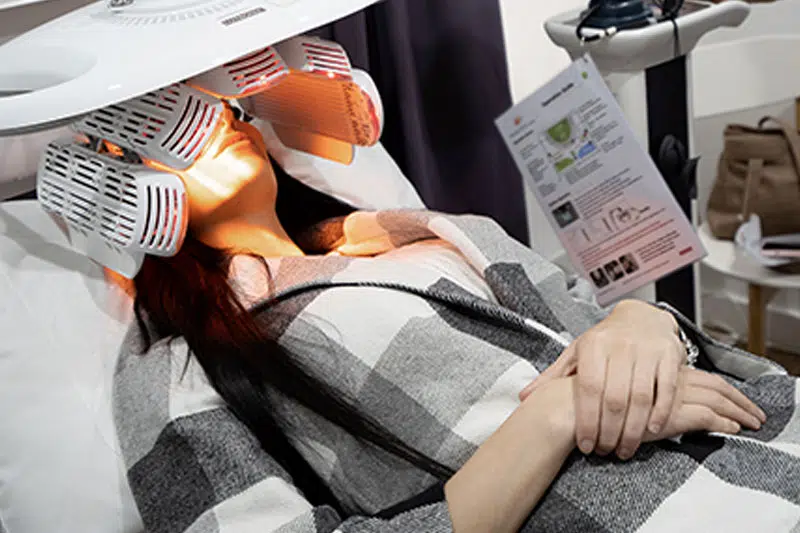A Guide to Reduce Scars after Body Lift Surgery
Body lift surgery has grown increasingly popular in recent years. The procedure aims to offer individuals a chance to reshape the body, especially after significant weight loss or other significant changes. But with any surgical procedure, there’s often a catch: scars. While these scars are a natural result of the surgery, many people hope to reduce their scars appearance after body lift surgery as much as possible.
Melbourne Specialist Plastic Surgeon Dr Carmen Munteanu will guide you through how to reduce scars after body lift procedure.
Take our Plastic Surgery Quiz to find out if you’d be a good candidate and if you are ready for cosmetic surgery.
Understanding Scars from Body Lift Surgery
When your skin gets injured, it goes through a healing process. During this process, your body produces collagen, a natural protein. Sometimes, the body produces more collagen than needed, leading to a raised area on your skin – that’s a scar. On other occasions, the healing might result in a mark that’s flatter or more sunken.
Now, not all scars are the same. Here are a few common ones:
- Keloid scars: These are raised scars that can spread outside the original injury area. They can be itchy or even painful
- Hypertrophic scars: These are also raised, but unlike keloid scars, they don’t spread beyond the injured area
- Contracture scars: If you’ve been burnt, you might notice your skin tightening or contracting as it heals. This type of scar can sometimes make it hard to move, especially if it’s over a joint
Download Dr Carmen’s Guide to Excess Skin Reduction Surgery
When you have body lift surgery, Dr Carmen needs to make incisions in your skin. As these incisions heal, scars naturally form. It’s your body’s way of sealing up and protecting the wound. Think of it like a natural stitch.
The size and visibility of the scar can vary depending on a few factors: your age, genetics, and even where the surgery took place on your body.
Next, we’ll go over steps and strategies to help reduce the appearance of these scars, ensuring you’re well-informed every step of the way.
Why Do Scars Appear Post-Surgery?
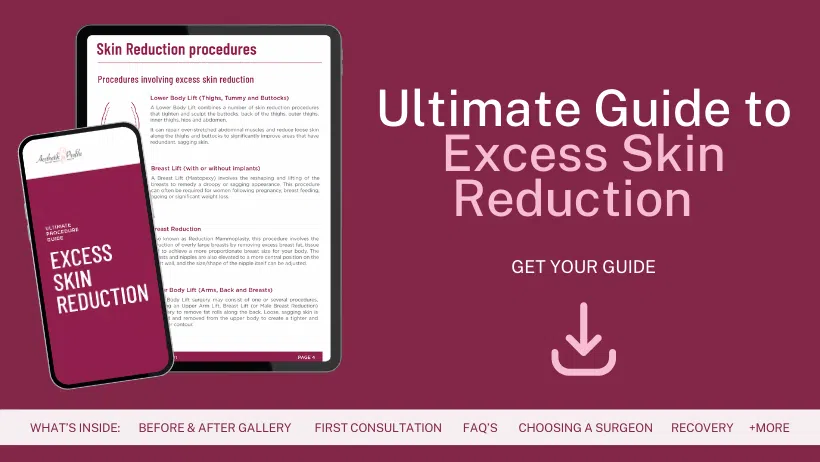
Immediate Post-Surgical Care: First 48 Hours
Protecting the Incision
One of the main things you’ll need to focus on post-surgery is taking care of the incision site.
- Keeping the area clean: This might sound basic, but it’s fundamental. Dressings are applied to protect the wounds and they have to be respected and kept in place. You will also have garments and drains, that will need protection
- Highly likely during this time you will be under the direct care of a hospital: Respect the instructions you are given, the position, and the garments. This is the time to understand where you start from and where you will have to be in the future, step by step. You will be exposed to medication pain relief, anti-inflammatories, sometimes blood thinners, and laxatives. You might experience side effects and this is a good time to find out what works and what doesn’t for you.
Remember, the first 48 hours after surgery are essential for setting the stage for smooth healing. Stay alert, follow advice, and give your body the care it needs.
Short-Term Care (First 2 Weeks – 4 weeks)
Taking care of your wound’s dressing is a top priority. Dr Carmen will likely provide guidelines, but here are some general tips:
- Don’t touch the dressings and don’t attempt to change them. Dr Carmen uses superior waterproof dressings that last for a minimum of 2 weeks. The practice nurse will attend to them as needed
- If you have concerns about dressings, please report to the practice and they will advise you on what to do
- Always wash your hands before and after any manoeuvre that can interfere with dressings. This simple step can help keep infections at bay
Application of Topical Products
There are several products out there designed to aid in wound healing and reduce the appearance of scars. They will not be used under any circumstance without checking with the Dr Carmen.
- Antibacterial creams
- Silicone gels and sheets: These are known to reduce inflammation and can help scars heal flatter and less noticeable. You will be instructed when these will be appropriate.
Maintaining Hydration and Nutrition
What you put into your body can affect how it heals on the outside. During these initial weeks:
- Drink plenty of water. Hydration assists in the healing process
- Focus on eating a balanced diet. Nutrients, especially vitamin C and zinc, can help with wound repair
Limit Physical Activity
In the first two weeks post-surgery:
- Avoid strenuous activities or heavy lifting
- Even light exercises, like walking, should be approached with caution and gradually introduced
- Listen to your body. If something feels off or causes discomfort, stop and rest
These might sound like simple steps, but they’re essential for your recovery. Your body has undergone a significant procedure, and these practices will ensure it gets the best chance to heal seamlessly.
Long-Term Scar Care and Management (Beyond 4 Weeks)
You will be likely instructed how to tape the scars, to help during this process. The practice will provide tapes, instructions and even help you tape for the first 3 months.
It’s very important to follow instructions, as this is the most important time in the scarring process.
The sun can be harsh, especially on healing skin. Direct sunlight can darken the scar, making it more noticeable. So, always:
- Apply sunscreen with a high SPF to the scarred area if it’s exposed
- Even if you’re just stepping out briefly, it’s better to be safe and shield your skin
Massaging the Scar
Massaging can be beneficial for scars, but it’s essential to do it right.
- Techniques and precautions: Use gentle, circular motions with your fingers. Ensure you’re not applying too much pressure, especially if the scar is still tender
- Benefits: Massaging can improve blood flow to the area, promoting healing. Over time, it can also soften the scar and reduce its raised appearance
Moisturising Regularly
Keeping the scar moisturised can help in reducing its appearance:
- Use plain, unscented moisturisers unless Dr Carmen recommends something specific
- Apply gently, ensuring the area isn’t irritated
Laser Treatments
Lasers offer a modern approach to scar reduction.
- Types of lasers: There are several types, including fractional lasers and pulsed dye lasers, each suited for different kinds of scars
- Benefits and potential side effects: Laser treatments can smooth out scars, reduce redness, and improve skin texture. However, some people might experience temporary redness, swelling, or minor discomfort after the procedure
Steroid Injections for Raised Scars
For scars that are notably raised Steroid injections can help flatten them.
Microneedling and Derma-rolling
These treatments involve using tiny needles to stimulate collagen production.
- The procedure can help reduce the depth and appearance of scars
- Like other treatments, always seek a qualified professional and discuss potential risks and benefits
- In some cases, Dr Carmen or the nurses in the practice will provide these treatments
Long-term scar care is about persistence and consistency. With time and proper care, scars typically become less noticeable. It’s always essential to speak with Dr Carmen about the best treatments and techniques suited for your unique situation.
Alternative Therapies and Remedies
You might’ve heard about applying vitamin E oil to scars. It’s thought to moisturise the skin and promote healing.
- The idea: Vitamin E can potentially improve the appearance of scars when applied topically. Dr Carmen will recommend Bio-oil or other forms of Vitamin E
Onion Extract Gels
Onion extract gels are sold as over-the-counter treatments for scars.
- They’re believed to reduce scar height and improve overall texture
- Consistent use over several months is typically recommended for visible results
Herbal Remedies (like aloe vera, honey, etc.)
Some natural remedies are praised for their potential in scar reduction:
- Aloe Vera: Known for its soothing properties, aloe vera can be applied to scars to moisturise and reduce inflammation
- Honey: An age-old remedy, honey has anti-inflammatory properties and might assist in scar healing. Remember, it’s sticky, so it’s best to use it as an overnight treatment and rinse it off in the morning
Acupressure and Acupuncture
Both these techniques originate from traditional Chinese medicine:
- Acupressure: This is a non-invasive therapy where pressure is applied to specific points on the body, possibly improving circulation and aiding in scar healing
- Acupuncture: Here, thin needles are inserted into specific body points. It might help reduce scar pain and improve its appearance. It’s essential to see a qualified practitioner if considering this approach
Potential Complications and Their Management
Overly Raised Scars (keloids and hypertrophic scars)
Sometimes scars can become more pronounced than we’d like:
- Keloids: These are thick, puckered, itchy clusters of scar tissue that grow beyond the edges of a wound. They can appear red or darker than the skin around them. Keloid scars can be challenging to treat due to their tendency to return. Options include steroid injections, surgery, or laser therapy. Remember, a professional can guide you best
- Hypertrophic Scars: These scars are thick and raised but don’t grow beyond the injury boundary. They might become less noticeable over time. Treatments like steroid injections, silicone sheets, or laser therapy can help in reducing their appearance
Scar Contractures
These occur when the skin “shrinks”, leading to tightness and a possible limitation in movement. They are more common after burns. Physical therapy can sometimes help improve flexibility. In more severe cases, surgery might be needed to release the tightened skin.
Hyperpigmentation or Hypopigmentation
Scarring can sometimes lead to changes in skin colour:
- Hyperpigmentation: This is when the scar becomes darker than the surrounding skin. This darkening can result from sun exposure or other factors. Sun protection is essential. Topical lightening agents or laser treatments might also be used
- Hypopigmentation: Here, the scar is paler than the surrounding skin. This loss of colour can be permanent in some cases. Cosmetic options, such as makeup or tattoos, can help improve appearance. Some might also consider skin grafting or micropigmentation for more permanent solutions
Scars can sometimes behave in ways we don’t expect. While complications can be concerning, it’s reassuring to know there are many treatments and strategies available. Always consult with Dr Carmen to understand your options and find the best solution for your unique situation.
FAQs about Scars after Body Lift Surgery

How long will it take for my scars to fully heal after body lift surgery?
- Scars start to mature and fade within a few months after surgery, but their appearance can continue to improve for up to a year or even longer. However, the exact duration varies among individuals and depends on factors like skin type, age, and post-operative care.
Can I completely eliminate scars after my surgery?
- While various treatments and therapies can significantly reduce the visibility of scars, it’s not possible to completely eliminate them. The goal is to make them less noticeable and improve their texture and appearance.
Why is my scar darker/lighter than the surrounding skin?
- Changes in skin colour, such as hyperpigmentation (darker) or hypopigmentation (lighter), can occur after scar formation. Factors like sun exposure, skin type, and the body’s healing process can contribute to these colour changes.
Can I exercise immediately after my body lift surgery?
- It’s essential to limit physical activity, especially strenuous exercises, immediately after surgery. Always consult Dr Carmen for specific guidelines, but light activities can be resumed after a few weeks, with more intensive exercise introduced gradually.
I’ve noticed a thickened and raised area on my scar. What should I do?
- Thickened, raised scars might be hypertrophic scars or keloids. Both are types of overactive scar formations. If you notice such changes, consult with Dr Carmen to discuss potential treatments and management options.
Further Reading about Body Lift Procedure with Dr Carmen
- Read more about Seven Common Body Lift Myths about Contouring Surgery
- Read more about Body Lift FAQs – Questions About Body Lift Surgery
- Read more about Medical Benefits of Body Lift after Large Weight Loss
- Read more about Recovery after Body Lift Surgery – Tips & Timeline
- Read Dr Carmen’s Blog about Compression Garments after Body Lift
- Read Dr Carmen’s Blog about How Can I Reduce Swelling and Bruising After Body Lift Surgery
Medical References about Body Lift Surgery
- Body Lift Procedure Steps – American Society of Plastic Surgeons
- Body Lift: Plastic Surgery – Cleveland Clinic
- Lower-Body Lift – Oxford Academic
- Complications of Lower Body Lift Surgery in Postbariatric Patients – NCBI
- Lower Body Lift (Belt Lipectomy) – Cleveland Clinic

